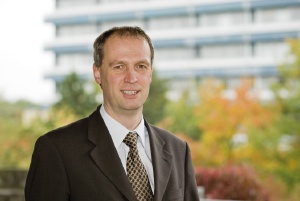Nov 12 2008
Hardly unpacked his bags at the RUB and already receiving honours in the USA: Prof. Andreas Ostendorf, holder of the chair for laser applications technology at the RUB (faculty of mechanical engineering) since 1.10. has recently been appointed a fellow of the renowned Laser Institute of America (LIA). Since January, Prof. Ostendorf has also been acting president of the LIA. With the title "Fellow", the LIA honours Prof. Ostendorf for his now 10-year membership of the institute and his contributions to international laser research and the networking of universities and research institutions.
 Prof. Ostendorf
Prof. Ostendorf
LIA: development, application, safety
Founded in 1968, the LIA is a global alliance of different researchers and users from the field of laser technology with, at present, 1,300 members. The aim of the group is to promote laser developments and applications and to improve laser safety. It thus particularly addresses users in industry, medicine and in research. The title of "Fellow" as awarded in the Anglo-American sphere has no equivalent in German. It expresses the special bond of the institute to its long-standing members, pays tribute to their academic contributions and their services to international exchange.
Personal profile: Prof. Ostendorf
With his main focus on laser applications technology, Prof. Dr.-Ing. Andreas Ostendorf has been bolstering the faculty of mechanical engineering since October. Among other things, his research activities are focused on applications of femtosecond laser pulses in micro- and nanotechnology and in biomedical engineering. Andreas Ostendorf studied electrical engineering at Hanover from 1989 to 1994. In 1995 he came to the laser centre Hanover, where he has held various functions since then. His most recent post was that of chairman of the board. He is also a member of various collaborative research centres (CRC) and research groups. This includes the CRC/TR 37 "micro- and nanosystems in the medical reconstruction of biological functions" and the CRC 675 "Creation of high-strength metallic structures and joints by setting up scaled locale properties".